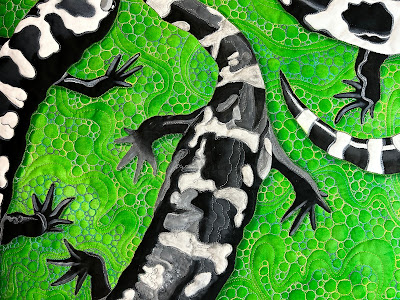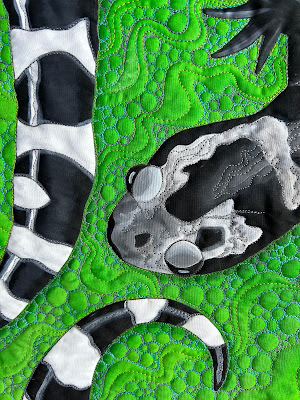“Marbled Salamanders” is a tribute to North Carolina’s state salamander. Ambystoma opacumis one of the smaller mole salamander species; adults grow to about 3-1/2 to 4-1/2". The light bands on the males, normally gray, are brighter white during breeding season, and juveniles have speckles.
Habitat loss due to
development, destruction, timber harvest and fragmentation is a threat
to this species. It relies on “ephemeral pools” – a type of wetland
devoid of fish, usually surrounded by deciduous forest or grassland,
that is dry for part of the year, then fill up in the winter.
These salamanders create burrows in floodplain pools and ponds, and in the fall, females lay their eggs under leaf litter or logs in dry areas that have not yet filled with winter rains. They remain with the eggs to keep them moist until they are covered with water. Larvae metamorphosize in about 3-6 months.
They eat slugs, snails, worms and insects, and are a food source for other animals, including owls, snakes, raccoons and weasels. They may live to be 8 to 10 years old.
Salamanders are known as an “indicator species” – they are very sensitive to any changes in the environment because of their permeable skins, and can warn us when pollutants or climate change are threatening an ecosystem. The population of amphibians around the world has severely declined in recent decades.

















I am so inspired by your art, especially those based on nature. I am looking for ways to expand my personal portfolio. I love your choice of quilting techniques.
ReplyDelete